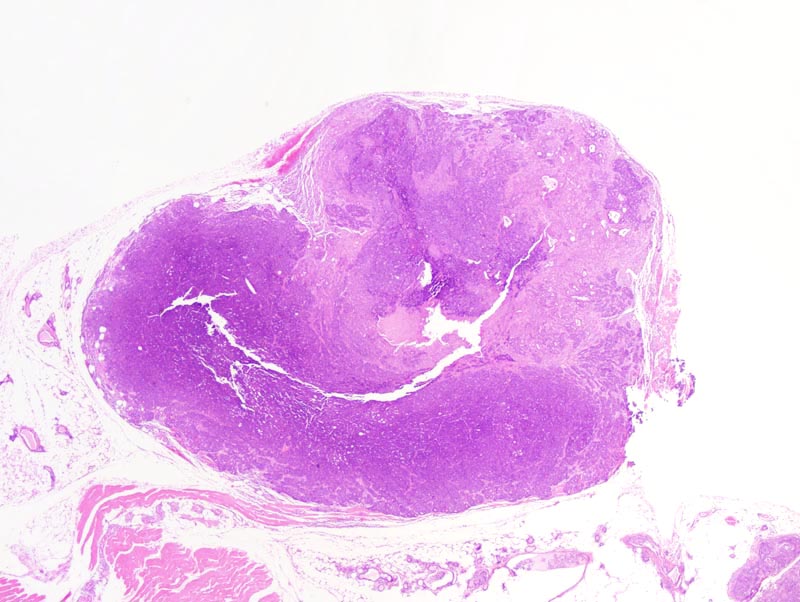Pathology Image Detail

Caption |
Mammary gland: the mammary gland is expanded by a large, nodular, unencapsulated, densely cellular neoplasm with a prominent central area of necrosis and cavitation. Most of the neoplasm has an epithelial phenotype. However, large portions of the neoplasm (?40%) show areas of epithelial to mesenchymal transition (upper right portions of the neoplasm). |
Description |
Adenocarcinoma, solid, glandular, with epithelial to mesenchymal transition, mammary gland |
Age at Necropsy |
240 days |
Contributor |
Ward JM (J:107304) |
Pathologist |
Mikaelian I (J:94320) |
Method |
H&E |
Model |
|
Strain |
|